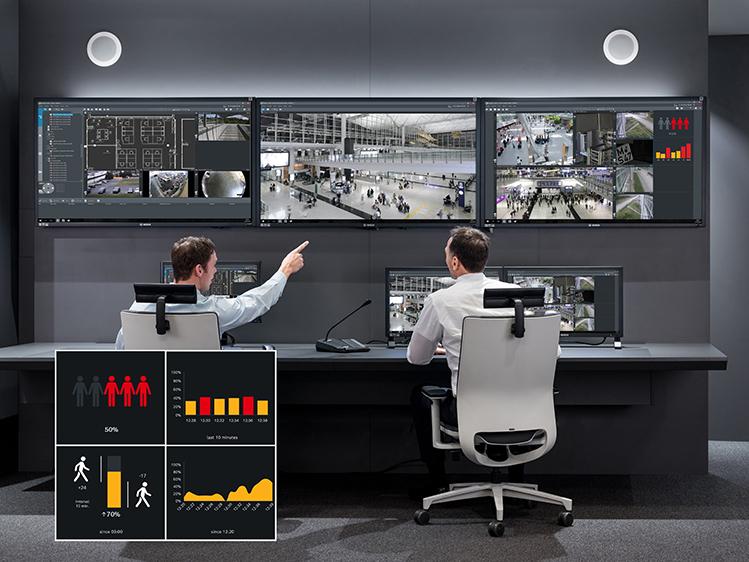By Maarten Wings, Global Vertical Manager Airports, Bosch Security Systems

Maarten Wings, Global Vertical Manager Airports, Bosch Security Systems: “Airports need to go digital. And that starts in the control room by using neural networks and machine learning to turn data from ‘smart’ cameras into actionable intelligence. Cameras with built-in Intelligent Video Analytics add sense and structure by adding a layer of metadata to video images.”
The process of digital transformation began impacting airports 10 years ago with the shift from analog to IP-based video cameras. This new generation of digital cameras offered better image quality and benefits like less cabling. But as digital transformation continues, our industry needs another shift – this time from IP to data.
Why? Because image quality alone is not the answer to the challenges facing modern airport control rooms. With several thousand digital cameras installed, operators are overwhelmed by hundreds of video feeds on their screens. And it’s no secret that after 20 minutes, the average operator misses 90% of important scenes. What’s more, airports are under pressure to optimise efficiency and passenger experiences, for instance by reducing wait times and congestion across the terminal.
Shifting from IP to data
As an answer to these challenges, airports need to go digital. And that starts in the control room by using neural networks and machine learning to turn data from ‘smart’ cameras into actionable intelligence. Cameras with built-in Intelligent Video Analytics add sense and structure by adding a layer of metadata to video images – processed ‘at the edge’ to reduce network computing loads – that support operators on three major levels:
• Security. Breaches, loitering attempts and perimeter incidents automatically detected by video analytics to automatically alert operators.
• Safety. Automatic alerts for fires, unsafe behaviour, over-crowding of spaces, speeding incidents in garage, and blocked exits.
• Operations. Detection of congestion, occupancy rates, processing times at gates as foundation for optimisation efforts.

Maarten Wings, Global Vertical Manager Airports, Bosch Security Systems: “The process of digital transformation began impacting airports 10 years ago with the shift from analog to IP-based video cameras. This new generation of digital cameras offered better image quality and benefits like less cabling. But as digital transformation continues, our industry needs another shift – this time from IP to data.”
Empowered with these data-based insights, the smart control room of the future will not only automate security processes for more situational awareness. Intelligent insights driven by video analytics will also allow operators to prevent incidents, instead of merely reacting, and drive operational efficiency on the strength of targeted first-hand data.
What our industry needs to get there, is a mind shift from considering a security camera as an image source to seeing it as a data sensor. A shift from IP to data. The data will carry you into the future of digital transformation. The image will not.
How about a data shootout?
For the last 10 years, it’s been standard practice for airport security managers to test image quality of digital cameras in camera shootouts under realistic conditions. But with the paradigm shift from IP to data, we need a data shootout to see which camera delivers the most relevant metadata. Because looking ahead, only the best-performing data source is the most future-proof investment.







